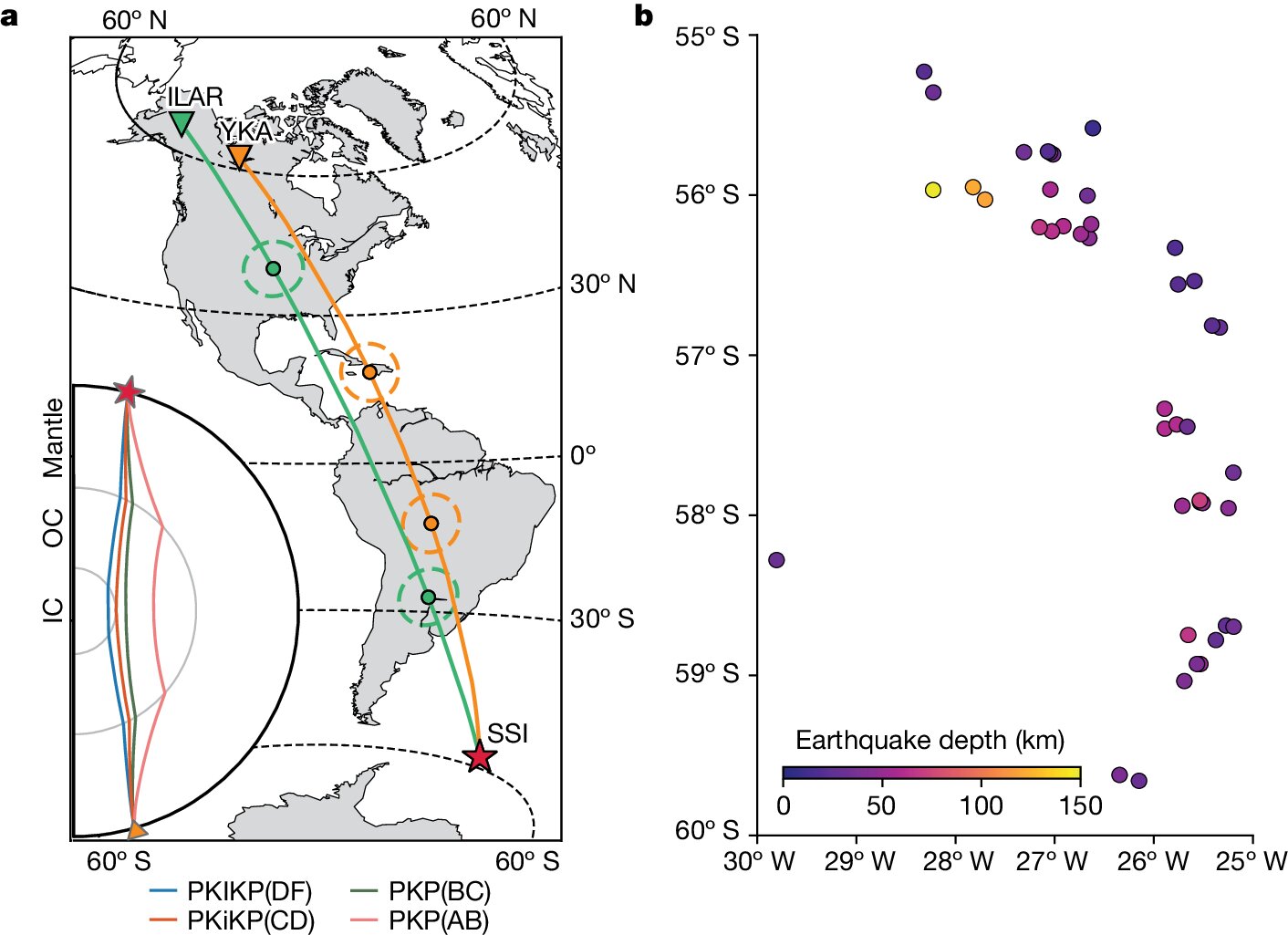Follow us on Google News (click on ☆)
For decades, the scientific community has debated the movement of the inner core, with some suggesting it rotates faster than the Earth's surface. However, the recent USC study clearly shows that the inner core began to slow down around 2010.
The inner core, a solid sphere of iron-nickel, is surrounded by a liquid outer core of the same composition. Starting at over 1,800 miles (3,000 kilometers) beneath our feet, it is not directly observable, forcing researchers to use seismic waves from earthquakes to study its motion.
For this research, John Vidale and Wei Wang analyzed seismic data from repeated earthquakes around the South Sandwich Islands, as well as Soviet nuclear tests and previous studies. These repeated earthquakes, occurring in the same location and producing identical seismograms, revealed changes in the rotation speed of the inner core.
According to Vidale, the slowing of the inner core is caused by the movements of the liquid envelope surrounding the inner core, as well as the gravitational forces from the dense regions of the overlying rocky mantle. This slowdown could even influence the length of Earth's days, although in an almost imperceptible manner.

Trajectories of seismic rays and location of events.
a - Trajectories of PKIKP and PKP rays from the SSI source region to the two arrays (ILAR and YKA). The IC region sampled with a representative 1.5 Hz Fresnel zone is marked by dashed circles centered at the PKIKP piercing points at the ICB. Inset, trajectories of PKP (PKP(AB) and PKP(BC)), PKiKP(CD), and PKIKP(DF) rays.
b - Map of the SSI region with source locations colored by focal depth.
Credit: Nature (2024). DOI: 10.1038/s41586-024-07536-4
Future research by USC scientists will aim to map in more detail the trajectory of the inner core to understand why its speed changes.
